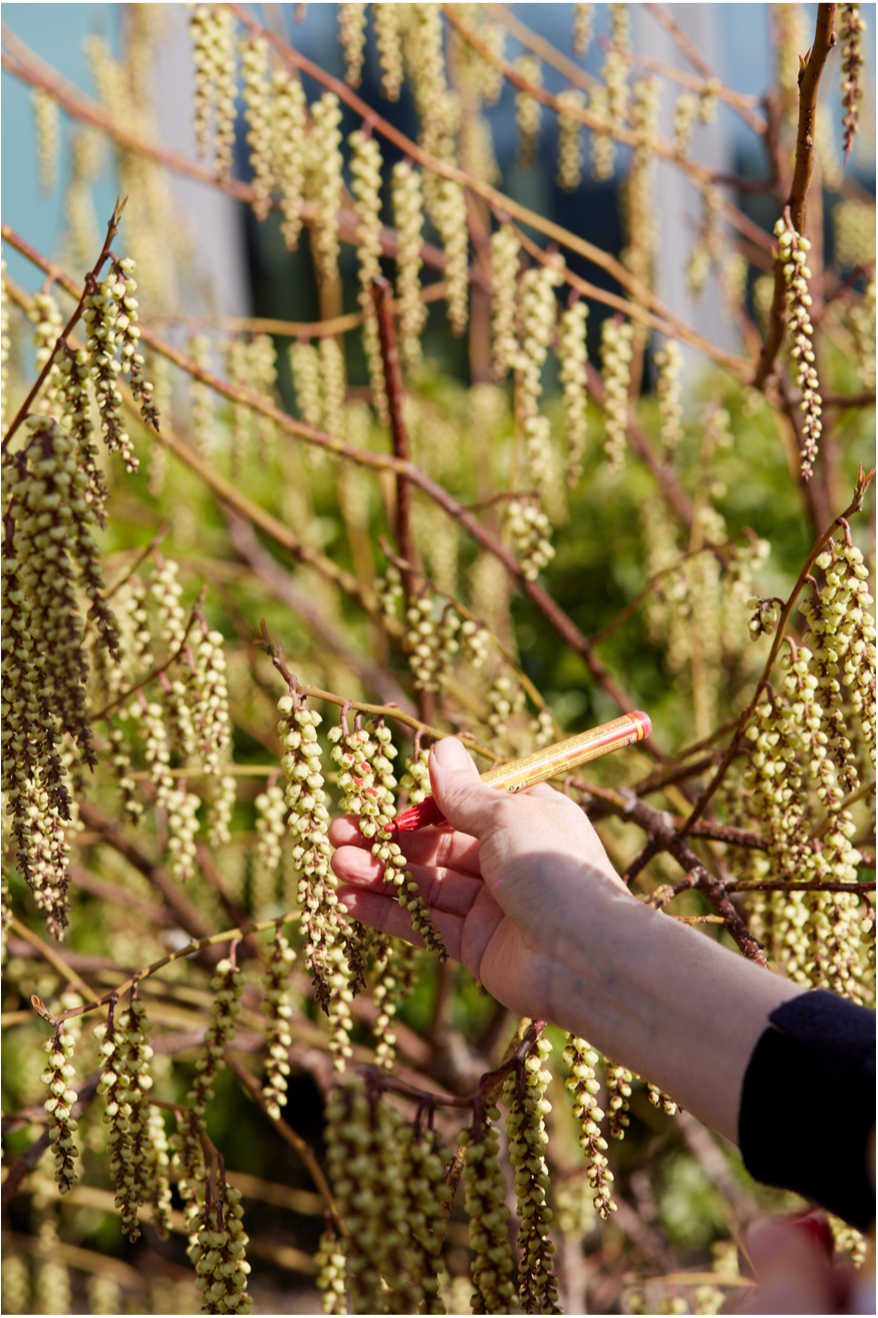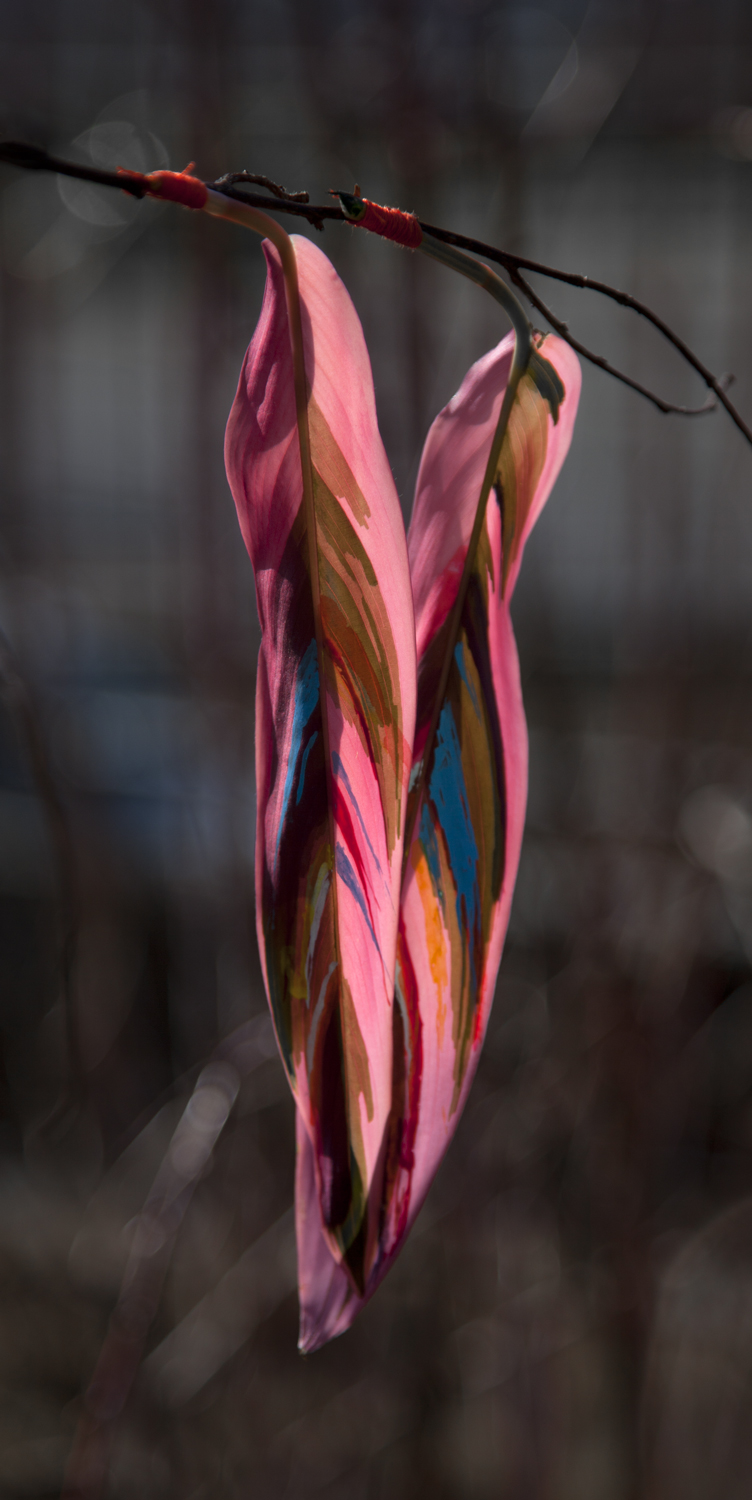15 june 2021, Flor Linckens
An interview with Elspeth Diederix
For the past five years, KPMG Meijburg & Co, partner of Unseen Amsterdam, has been inviting exhibiting photographers at the fair to submit a proposal for the Meijburg Art Commission. The resulting work is included in the corporate collection. During Unseen 2016, Elspeth Diederix's proposal was chosen from five submissions, which meant that she was invited to make a custom work. In this interview, you will read more about why his work is so enticing and how she managed to interweave the garden of Meijburg & Co into the resulting work of art.
In her work, Elspeth Diederix manipulates nature to create magical and surrealistic still lifes. This dreamy effect is further enhanced by her extremely careful compositions, as well as her use of colour and materials, that often don’t seem to correspond with what is being depicted. What is remarkable about that is that these adjustments are made by hand, without the use of Photoshop. Through her photos, Diederix wants to make us part of the infinite poetry, richness and beauty of nature. She tries to capture a very specific moment.
Diederix: “That moment when everyday phenomena lose their familiar appearance and become truly visible as a result.”
The KPMG jury report was very positive at the time:
“We were taken by the understated complexity of her images. Upon first glance, they are striking photographs of flowers. Upon a closer look, however, the viewer realizes that the work has great depth. Elspeth is constructing environments, manipulating reality by creating flowers that don’t actually exist. Her work requires you to think a bit more, to wonder what is going on, what has she done to create the image? Her work reminds us of the famous Dutch Masters and its typical use of light.”
Diederix was born in Nairobi, Kenya in 1971, and grew up in Colombia as the daughter of a geologist. She moved to the Netherlands in 1985, where she studied at the Gerrit Rietveld Academy, followed by a residency at the prestigious Rijksakademie. During this period, she started making sculptures and paintings, but she ended up specialising in photography. Occasionally she pushes personal boundaries, like she did for a series of dreamy underwater still lifes, despite the fact that she describes herself as a ‘scared diver'. In 2002, Diederix won the prestigious Prix de Rome for Photography. When she got a studio in the Witte de Withstraat in Amsterdam in 2009, it turned out that it came with a large garden. She followed a horticultural training course to learn everything about the plant world. She will, for instance, manipulate flowers by providing them with minuscule geometric patterns. She does not do this to improve nature, by the way. Diederix: “I want to emphasise their beauty by adding extra lighting to inconspicuous things, by darkening the background or by adding a dash of extra colour.”
In 2019, the photographer opened a special project in Amsterdam-West, the 'The Miracte Garden’: a unique, experimental and public flower garden in the Erasmus Park that measures 800 square meters. The project was conceived and executed by the photographer. The garden contains hundreds of beautiful flower varieties and, over the years, also a number of failed experiments. The result is a dynamic garden that will be slightly different during every visit.
When Diederix won the Meijburg Art Commission in 2016, she paid an exploratory visit to KPMG's headquarters and it should come as no surprise that she immediately felt a magnetic attraction to the front garden of the office building. Diederix: “A garden full of beautiful and special plants and shrubs. I fell for the discolouration in the leaf of the wig tree (Cotinus coggygria). I took this remarkable discolouration as a starting point for the work. The main message I want to convey with all my work is the importance of observing magnificence in our surroundings. I am passionate about finding the beauty in nature, or in what might be considered ordinary objects that go unnoticed. I want my audience to realise the unique qualities of seemingly mundane subjects. Since my existing work primarily features flora and fauna, I began developing a project that facilitated a gradient transition between the inside and the outside of the office, photographing subject matter from Meijburg & Co’s own outdoor space. Since the office has high ceilings, I decided to make very tall prints.”
We also ask her how she experienced the project at the time. “Unlike a lot of other commission ventures, the Meijburg Art Commission is very open-ended, so developing this project has been quite fun. Without this opportunity, I never would have spent time in the office garden and I also never would have thought to create such tall prints. The fact that the work has to be created for a particular area in their office is more of an interesting challenge than a restriction—it was a sort of puzzle that I had to figure out with creativity. It is a generous award and I enjoyed working with the people behind the Meijburg art Commission, who were very involved. These kinds of assignments offer you a chance to work in a different way, to try something different. For this assignment, I made a work in a format that was new to me because the space required it.”
When we ask her if she has any tips for future participants, she only says: “Enjoy the process, because these are the fun assignments.”



